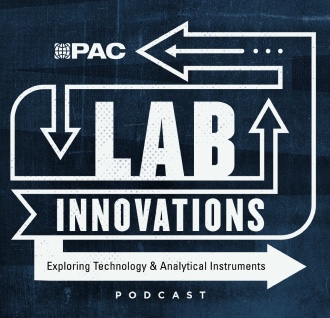Feb-2024
Primary data sharing for supply chain decarbonisation
Study to highlight the environmental impact across a product supply chain so substainability improvements can be implemented.
Lavanya Pawar
Carboledger
Viewed : 3155
Article Summary
In 2009, PepsiCo partnered with Columbia Earth Institute to initiate a comprehensive life cycle assessment (LCA) study, focusing on its flagship product, Tropicana (Evarts, 2012). The primary objective of this collaboration was to gain a deep understanding of the environmental impact across the entire supply chain for Tropicana and pinpoint areas where sustainability improvements could be implemented. The outcomes of the LCA study yielded unexpected insights. Contrary to prevailing beliefs within the industry, it was revealed that more than 90% of emissions associated with Tropicana stemmed from the use of fertilisers in the orange grove. This revelation stood in stark contrast to the assumption that a significant portion of emissions was confined within the boundaries of the company, primarily due to the utilisation of fossil fuels (see Figure 1).
This study allowed PepsiCo to take significant steps to reduce its carbon footprint by replacing the fertilisers used at its farms. However, this example represents only a small portion of the work that was required to engage with partners in the supply chain who had no direct communication with the company.
Riding the wave of market forces
Over the past decade, significant strides have been taken in quantifying the sustainability of supply chains, turning it into a crucial element of the supply chain decarbonisation process. However, not every organisation possesses the resources and influence of a giant like PepsiCo, often relying on market dynamics to propel sustainability changes in their supply chain. Fortunately, contemporary markets are compelling organisations of all sizes to embrace sustainability.
While tethered to market forces for supply chain decarbonisation, it is crucial to recognise that these forces wield substantial economic influence. Consequently, interventions cannot adopt one-size-fits-all averages, irrespective of suppliers’ sustainability endeavours and geographical nuances. Take, for instance, two manufacturers utilising the same input materials but from suppliers in different locations – deciding how to decarbonise may demand tailored approaches. Similarly, if two suppliers in the same area utilise different energy sources, the manufacturer might need to incentivise one through green premiums or prioritise the use of renewable energy in their procurement decisions. Effectively tackling the decarbonisation challenge hinges on real data and specific supplier insights, avoiding reliance on broad industry averages.
Moving beyond estimates
Addressing supply chain emissions can often seem like a daunting task for many companies. This is frequently due to their limited visibility into these emissions and the perception that they have little influence over measures to reduce emissions. However, the implementation of supplier engagement targets provides a mechanism to exert influence over decarbonisation efforts within a company’s supply chain, especially when granular emissions data is difficult to obtain or simply not available. These targets are designed to encourage a specific subset of suppliers to set their own science-based targets, encompassing all relevant scopes and categories, in the near future.
It is important to note that emissions from supply chains are, on average, 11.4 times greater than the direct emissions resulting from operations (see Figure 2) (Moreno Lopez & Smith, 2023). In the chemical industry, about 77% of emissions stem from the supply chain, with nearly 60% attributed to the production (or extraction) of raw materials (Rycke, 2022). Consequently, a substantial facet of supply chain decarbonisation efforts should zero in on curtailing emissions linked to raw material production. While methods like average emission factors offer initial guidance for screening and pinpointing priority areas, they represent just the starting point. For decarbonisation endeavours to be economically feasible and for pinpointing opportunities, real data and active engagement with suppliers become imperative. Informed decision-making in green supply chain management necessitates incorporating a product’s carbon footprint alongside other pivotal indicators, such as price and quality, into product specifications. Therefore, the initiation of broad-scale decarbonisation efforts across supply chains represents one of the most critical and effective strategies to achieve the global objective of net-zero emissions.
Calculating Scope 3 emissions
Table 1 provides a broad summary of the various methods used for Scope 3 emissions calculations across the 15 Scope 3 categories defined in the GHG Protocol (see Figure 3, GHG Protocol, 2013). Consider an example pertaining to Scope 3 – Category 1 (Purchased Goods and Services). For a majority of corporations, employing Environmentally Extended Input Output (EEIO)-based models for calculating this category of emissions has proven to be the most expedient method. However, when it comes to accounting for decarbonisation, this approach has been markedly inefficient.
Take, for instance, Company A, which intends to expand its business and augment the production of Product X. This company has set a target, approved by the Science Based Targets initiative (SBTi), to reduce its Scope 3 emissions by 20% by 2030. As Company A continues to increase the production of Product X, the emissions associated with procuring the raw material required for its manufacture are also likely to rise, given that the emissions methodology is intrinsically linked to the quantity of material purchased. This correlation renders the achievement of the SBTi target increasingly challenging.
However, if the emissions associated with the purchased goods are reduced and accurately accounted for, the company can demonstrate an increase in production concurrent with a decrease in emissions. This scenario underscores the importance of accurate emissions accounting in achieving sustainability targets while maintaining business growth.
Accurate, supplier-specific data is pivotal for such decisions, encompassing factors like the use of recycled raw materials, energy sources, and other unique considerations. As tier 1 suppliers increasingly base their purchasing decisions on the carbon footprint of the purchased goods and services, this influence permeates through the supply chain, establishing a feedback loop that accentuates the demand for precise data. While gathering accurate data from the supply chain is a critical step, the broader challenge lies in ensuring uniform data collection formats and maintaining data quality across diverse suppliers. Efforts to address this challenge include industry initiatives that standardise methodologies for calculating product carbon footprint.
GHG Protocol for Scope 3 emissions
The GHG Protocol offers guidelines for calculating Scope 3 emissions, delineating two types of data applicable to this process: primary and secondary data (GHG Protocol, 2011). Primary data, directly furnished by suppliers or other sources, pertains to specific activities within the company’s value chain.
Categories:
Add your rating:
Current Rating: 4

















